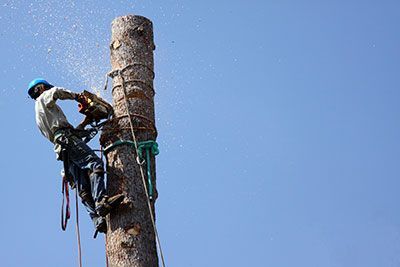Boerne tree service pros
Tree Removal Boerne, TX
Tree removal is most certainly a dire, last-resort practice. Trees have some amazing natural defenses to them and are often able to surprise us with their ability to fight off assaults to their health – a healthy tree is constantly warding off pests and bacteria, repairing itself as needed and doing all sorts of things that could justifiably be called amazing.
Unfortunately, sometimes the damage done is too much even for the most resilient tree. When the persons in charge of the tree are out of town for prolonged periods of time or simply aren't on-site very often, infection and infestation can reach frightening heights. More than just being an unpleasant sight harboring a foul smell, a tree that has been suffering infestation from bacteria or pests for too long can pose a serious danger to plant and animal life in the vicinity – in some cases, even people can suffer ill effects.
TREE REMOVAL IN BOERNE, TEXAS
Call 830-331-5588


Without a doubt, tree removal is a daunting task. However, we find that those attempting to remove a tree without the help of professionals often end up dealing with something even more difficult: the damage that a falling tree can cause to nearby structures and objects.
Among the biggest problems of DIY tree removal is the inability to correctly assess the tree's height, as well as estimating its falling trajectory. All of these things need to be taken into account before the first inch of metal starts burrowing into the tree's side.
In these cases, the most merciful and prudent thing is usually to remove the tree altogether. Many tree service contractors welcome every opportunity to chop down a tree as it tends to be the most expensive service on the menu. With us, it's the opposite – we find ourselves fearing the possibility of removing a tree time and again since we understand that every tree is a living organism. It might take only an afternoon to remove a tree, but it could have taken years or even decades for it to grow to its current state, making every tree removal job tough.
That being said, if we have diagnosed the tree and (potentially) tried certain treatments with little to no results, we'll go ahead and make the necessary preparations. We find it best to remove a tree quickly and efficiently so that the property owner can move towards filling out the gap immediately – make no mistake, there will always be a sizeable gap left, usually in more ways than one.
The reasons one could have for tree removal vary, but they generally involve a widespread infection or simply a desire to have more room for an altered landscape. No matter your reasons, we'll handle your tree removal from start to finish, including the safe disposal of the tree after it has been brought down.
Of course, we'll always assess the tree first and see whether it truly needs to be removed. In cases of bacterial infection, moderate pruning can often do the trick as trees can recover even when being on the brink of death, while in cases of space necessities, functional and/or aesthetic trimming can reduce the tree or help it grow in a different and more agreeable direction.
